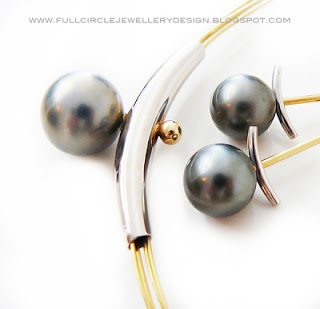In 1916, Kokichi Mikimotot obtained the first patent for producing cultured pearls. Today, the practice is common, and most marketable pearls are cultured. Creating a cultured pearl is actually the technique of giving Mother Nature a little extra something to work with. Shell beads or other irritants are placed inside a small cut in an oyster or mussel, triggering the mollusks to begin covering the offending intruder with nacre. The thicker the nacre becomes, the more lustrous the pearl will be. The longer a pearl has been allowed to grow, the thicker its nacre. Cultured and natural pearls are considered equal quality, but cultured pearls are typically less expensive because they are more common.
When most people think of pearls, they think of a creamy white, luminescent colouring. However pearls come in a variety of colours, including gold, cream, black, grey, blue, pink, and green. Many pearls actually have a main colour with a second shade as an overtone or highlight. The combination of these colours influences the value given to a particular stone. A white body with pink hues is one of the most expensive and most popular pearl colours.





Thank you so much for the lovely opportunity. They look stunning in the pic love to see them in person.
ReplyDeletepearls jewellery
Pearls are naturally more sensitive than other types associated with jewelry, as well as require unique care within storage as well as cleaning. Some Designer Pearl Jewelry could be cleaned within an ultrasonic solution, pearls need a different remedy. If dealt with or cleaned out improperly, your classic pearls may break or even the nacre (the iridescent layer secreted in the clam) may wear away.
ReplyDelete